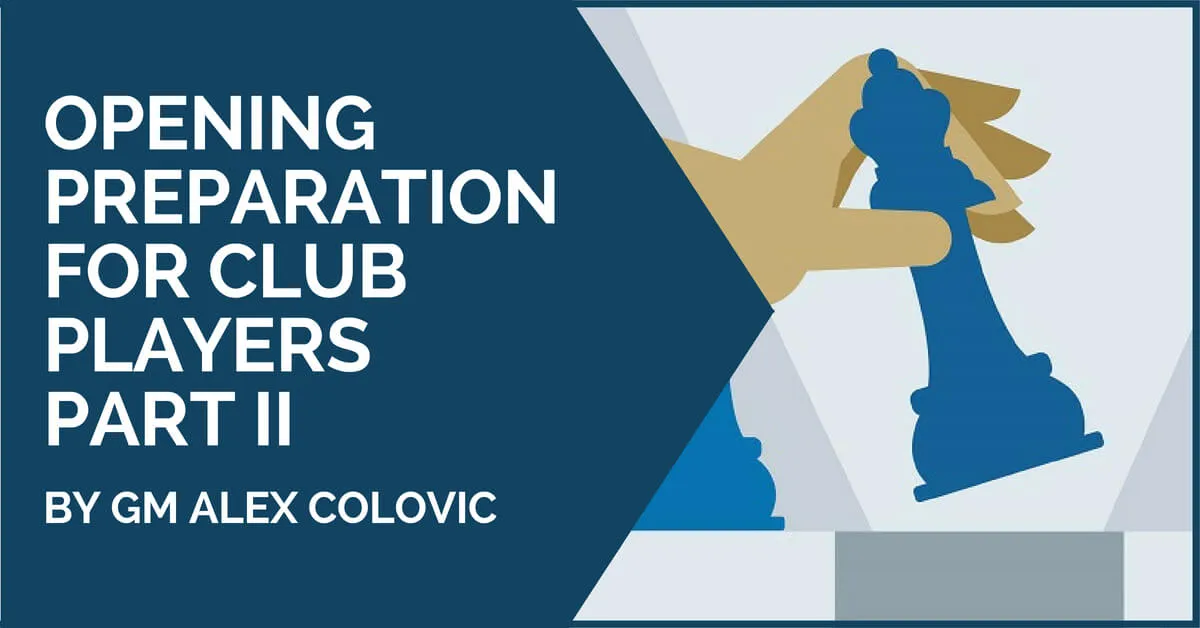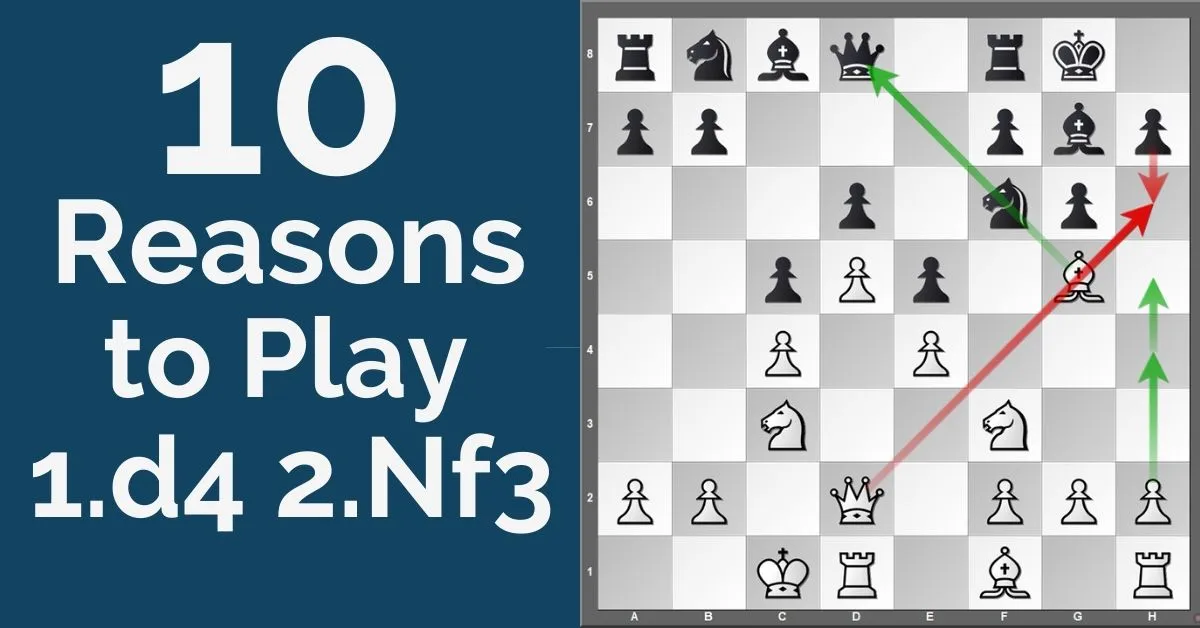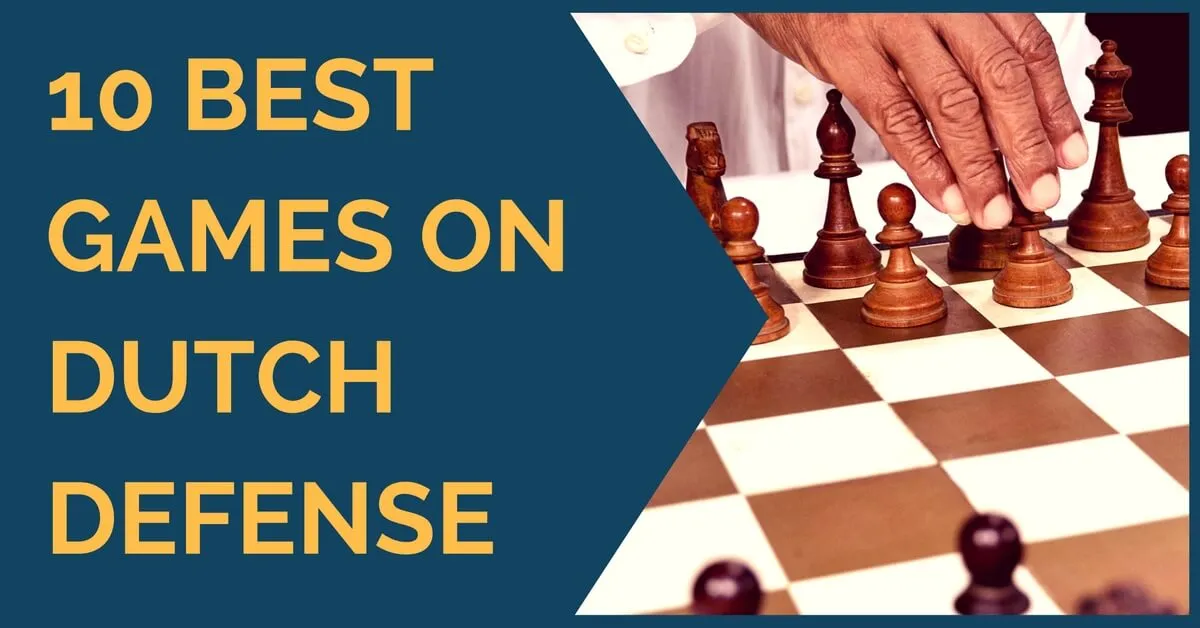Opening Preparation For Club Players – Part II

Opening Preparation: In Part I, we saw what White has at his disposal on move 1. Here we will take a look at what Black can do when faced with each of White’s main moves (except for 1.e4, which will be dealt with in Part III).
White’s 1.b3 was deemed impractical in our analysis in Part I and rightly so. Black has a wide array of choices here and can pick up any line that is to his liking.
Many people say that preparation is the key to the success.
After 1.c4, Black’s choice may be limited by his preferred opening against 1.d4. This is the case because often 1 c4 can transpose to openings and positions after 1 d4. For example, after 1. c4 c6 the game can transpose to a Slav after 2.d4. Or after 1. c4 e6 the game can transpose to a QGD or Nimzo after 2.d4 d5 or 2.d4 Nf6 3.Nc3 Bb4. So unless Black plays these openings against 1.d4, he cannot really choose these moves against 1 c4.
The above examples show one of the main problems of opening preparation and that is the problem of transpositions. When constructing a repertoire and preparing an opening it is vital to note and be careful of all the possible transpositions, making sure they do not lead you out of your prepared lines.
However, if against the English Black doesn’t want to be dependent on his preferred opening against 1.d4, then he has the universal answer 1…e5.
How practical is this?
Opening Preparation: After 1. c4 e5 White has two options
By far the more popular is the fianchetto of the Bf1, while the other option is to play e3 (either after d3 or leaving the pawn on d2). What is important for Black is that after either option it will be him who will choose the opening set-up.
Whether he will play the Reversed English (1 c4 e5 2 g3 Nf6 3 Bg2 d5) or develop the Bf8 to b4 or c5 (1.c4 e5 2. g3 Nf6 3. Bg2 Nc6 4. Nc3 Bc5 or 4…Bb4) or play Anand’s latest preference of 1.c4 e5 2.Nc3 Bb4 – it is everywhere Black who decides what to play, thus making his preparation much more practical.
Against 1. d4 Black has a choice of many openings.
Let’s take a look at the most important ones.
The Slav is a very solid option for Black. However, from a practical perspective, only the Chebanenko Slav (where Black plays …a6 against all White’s alternatives) is worthy of consideration.
The Semi-Slav (1.d4 d5 2.c4 c6 3.Nf3 Nf6 4 Nc3 e6) allows for too much variety (the Moscow Variation, the Anti-Moscow Gambit, the Meran, even a transposition to the QGD Exchange Variation), while the Classical with 4…dc (1.d5 d5 2.c4 c6 3.Nf3 Nf6 4.Nc3 dc) is easily avoided if White plays e3 on move 3 or 4. The Chebanenko, on the other hand, is similar to a “scheme” because Black plays …d5, …c6, …Nf6, and …a6 irrelevant to what White does.
Truth be told, White does have a wide choice of lines against the Chebanenko, for example in the basic position after 1.d4 d5 2.c4 c6 3.Nf3 Nf6 4. Nc3 a6 White has the options of 5.a4, 5.Qc2 (the latest fashion!), 5.c5, 5.e3, 5.cd (transposing to the Exchange Variation), 5 Ne5 and 5 g3 to name just the most important ones. So, while Black’s idea is simple, to get the Bc8 out and play …e6, he still needs to study the nuances of all of White’s possible lines.
Opening Preparation: The Queen’s Gambit is another solid option.
But of the two, Accepted (QGA) and Declined (QGD), the Accepted is the more practical one. The reason is that against the QGA White has three attempts, 3.e3, 3.e4, and 3.Nf3, and against each Black has a choice of lines. However, if he decides to enter the main lines after
3.Nf3 Nf6 4.e3 e6 5.Bc4 c6 6.0-0 a6, here it is White who has a big choice. If Black wants to stay practical, he needs to choose one of the alternatives along the way, such as 3…a6 or 4…Bg4. Against 3.e3 then, in order to avoid a transposition to the mainline after 3 Nf3 mentioned above, he is well-advised to play 3…e5.
The Queen’s Gambit Declined
The Queen’s Gambit Declined has a centuries-long solid reputation, it is the opening for World Championship matches (as Kasparov called it). Looking at it from a practical perspective it looks somewhat inferior compared to the QGA. First there is the Catalan (1.d4 d5 2.c4 e6 3.Nf3 Nf6 4.g3) which is very popular nowadays. Luckily here it is Black who chooses his option, so that can be dealt with.
Then there are main lines with Bf4 and Bg5 (1.d4 d5 2.c4 e6 3.Nc3 Be7 (or 3…Nf6, depending on what Black plans to do against 4 cd) 4.Nf3 Be7 5.Bf4 or 5. Bg5). Still, against both, it is Black who chooses the line to play (for example, against the more popular 5 Bf4 Black has no less than 3 good options: the line with 6…Nbd7 (after 5…0-0 6 e3), the line with 6…b6 and the line with 6…c5).
And finally, there are the sidelines where White plays e3 at some point, but here again Black can choose his preferred option. As you can see, in the QGD White has more options to choose from, but against all, it is Black who in turn chooses his preferred defense. To conclude, the QGD is not a bad practical choice.
Opening Preparation: The Nimzo-Indian
The Nimzo-Indian (1.d4 Nf6 2.c4 e6 3.Nc3 Bb4) is one of the best openings against 1 d4. The only problem is that it can easily be avoided by either 3 Nf3 or 3 g3. Still, against it, White has such a variety of choices (4.Qc2, 4.e3, 4.Nf3 and the lesser alternatives 4.a3, 4.Qb3, 4.Bd2, 4.Bg5, 4.f3, and 4.g3) that studying it is a very demanding task. Similarly, the Queen’s Indian Defence after 3.Nf3 b6 equally offers White a selection of several main lines: 4.Nc3, 4.a3, 4.e3, and 4.g3, though against each Black can steer the game towards his preferred line.
Moving towards the Black fianchetto, the Grunfeld (1.d4 Nf6 2.c4 g6 3.Nc3 d5) nowadays is considered to offer the best of both worlds to Black – it is theoretically in excellent shape and is also very dynamic and offers good counter-attacking chances. The price to pay for such an ideal opening? It is by far the most impractical of all! White has the widest array of options against the Grunfeld, to name but a few: the Russian System (4.Nf3 Bg7 5.Qb3), the Exchange Variation (4.cd Nd5 5.e4 Nc3 6.bc c5 and here White has another choice among 7.Bc4,
7.Be3, 7.Nf3, 7.Ba3, 7.Bb5 and 7.Qa4), the fianchetto (in various versions, whether starting with 3.Nf3 Bg7 4.g3, to 4.cd Nd5 5.g3), the Bf4 systems (4.Bf4 or 4.Nf3 Bg7 5.Bf4), the Bg5 systems (4.Bg5 or 4.Nf3 Bg7 5.Bg5) and several others as well. Needless to say, this is way too much even for strong Grandmasters!
The King’s Indian
The King’s Indian is similarly impractical (White has a big choice of lines against it) and theoretically speaking it is also inferior to the Grunfeld. The play is initially less dynamic than in the Grunfeld and Black is struggling in several lines, such as the popular Makagonov line (1.d4 Nf6 2.c4 g6 3.Nc3 Bg7 4.e4 d6 5.Nf3 0-0 6.h3) and the Mar del Plata lines where with the help of engines the White players discover new ways to defend their kingside.
The gambits against 1.d4 have a major drawback that they can be easily avoided. Both the Benko (1.d4 Nf6 c4 c5 3.d5 b5) and the Benoni (1.d4 Nf6 2.c4 c5 3 d5 e6) are easily avoided by 3.Nf3, while the Albin (1.d4 d5 2.c4 e5) and the Budapest (1.d4 Nf6 2.c4 e5) are equally easily avoided by 2.Nf3. This fact makes these openings impractical since there is no guarantee you will be getting them on the board and you may soon end up playing positions after 2/3 Nf3 much more often than your preferred gambit.
Opening Preparation: The Dutch
Finally, the Dutch (1.d4 f5) is a very impractical choice because as early as move 2 White has a wide choice of good options. Whether that is going for the main lines with 2.g3, or a set-up based on 2.Bg5, 2.Nc3, 2.Nf3, 2.c4, 2.Qd3, or even 2.h3, it is just too much freedom allowed too early.
Black’s choice after 1.Nf3 depends on his preferred opening after 1.d4 (or even 1 e4 – for example if he plays the Sicilian he can reply 1…c5, not fearing a transposition after 2.e4). Unlike 1.c4, Black doesn’t have an independent option here, so he must choose his moves here carefully in order not to be “move-ordered” into something he hasn’t studied after 1.d4. Since 1.Nf3 is largely a transpositional option (except for the King’s Indian Attack, against which Black can choose one of the many good options), Black is only well-advised to study them carefully as sooner or later he will end up in his defense against 1.d4.
We also recommend reviewing Understanding Chess Weaknesses – 3 Things to Know.
In Part III we will look at Black’s opening choices after 1.e4.










Comments: